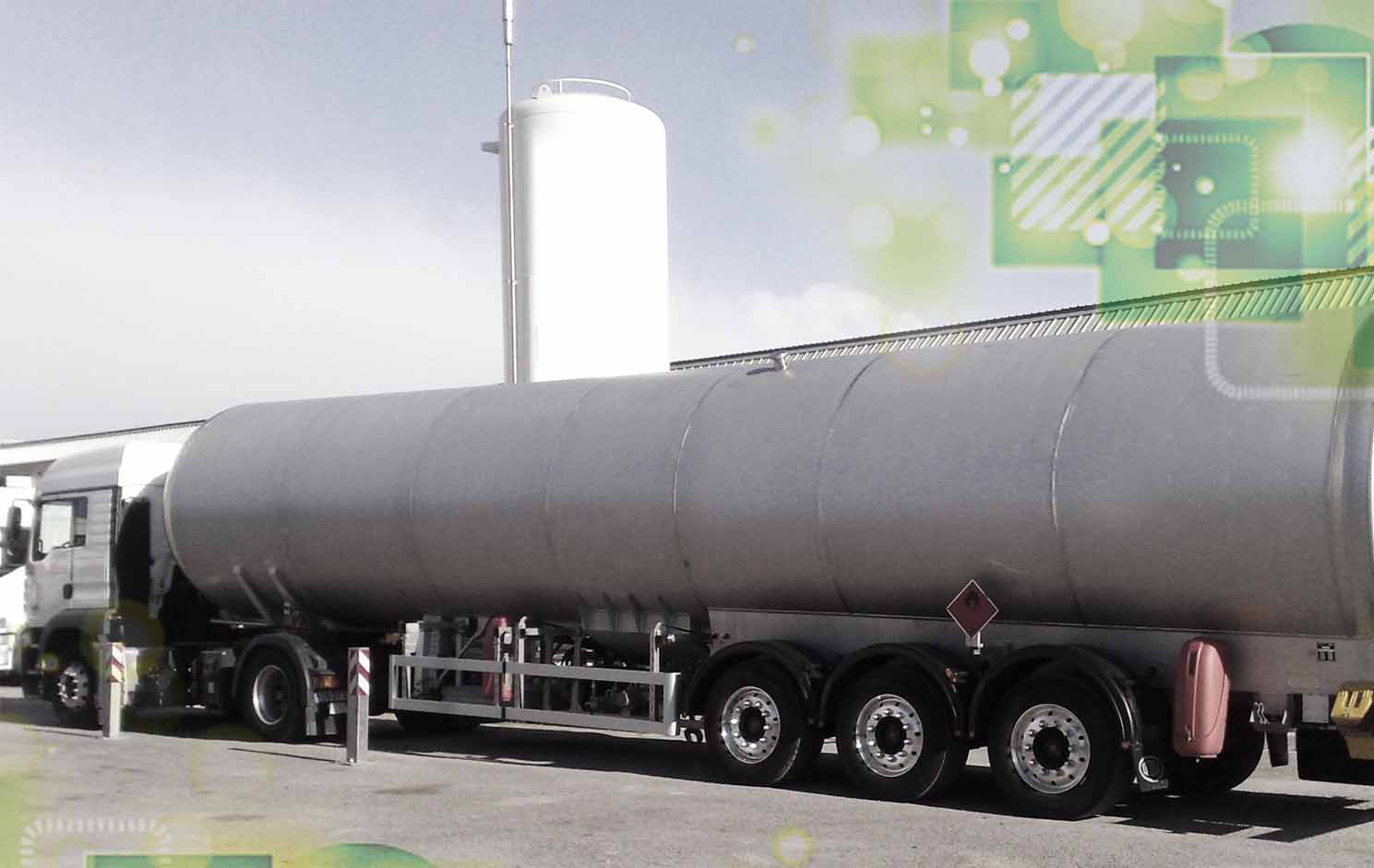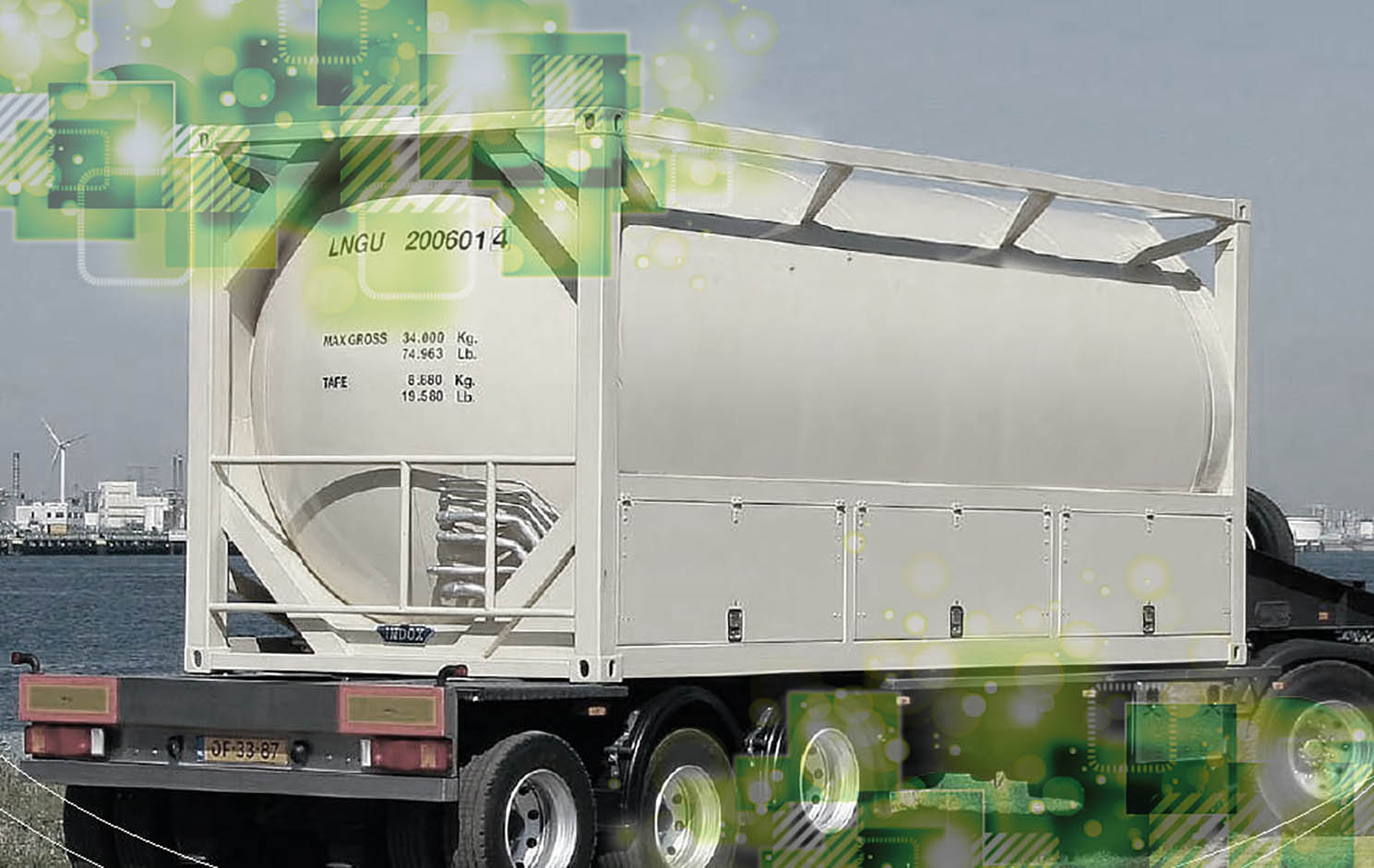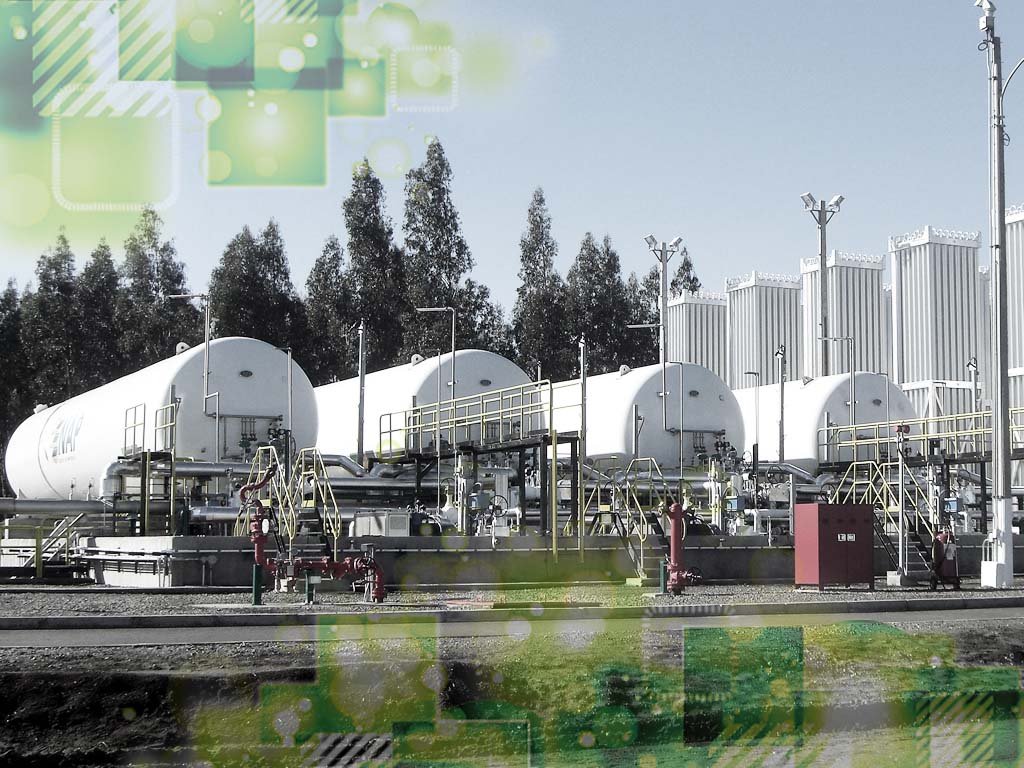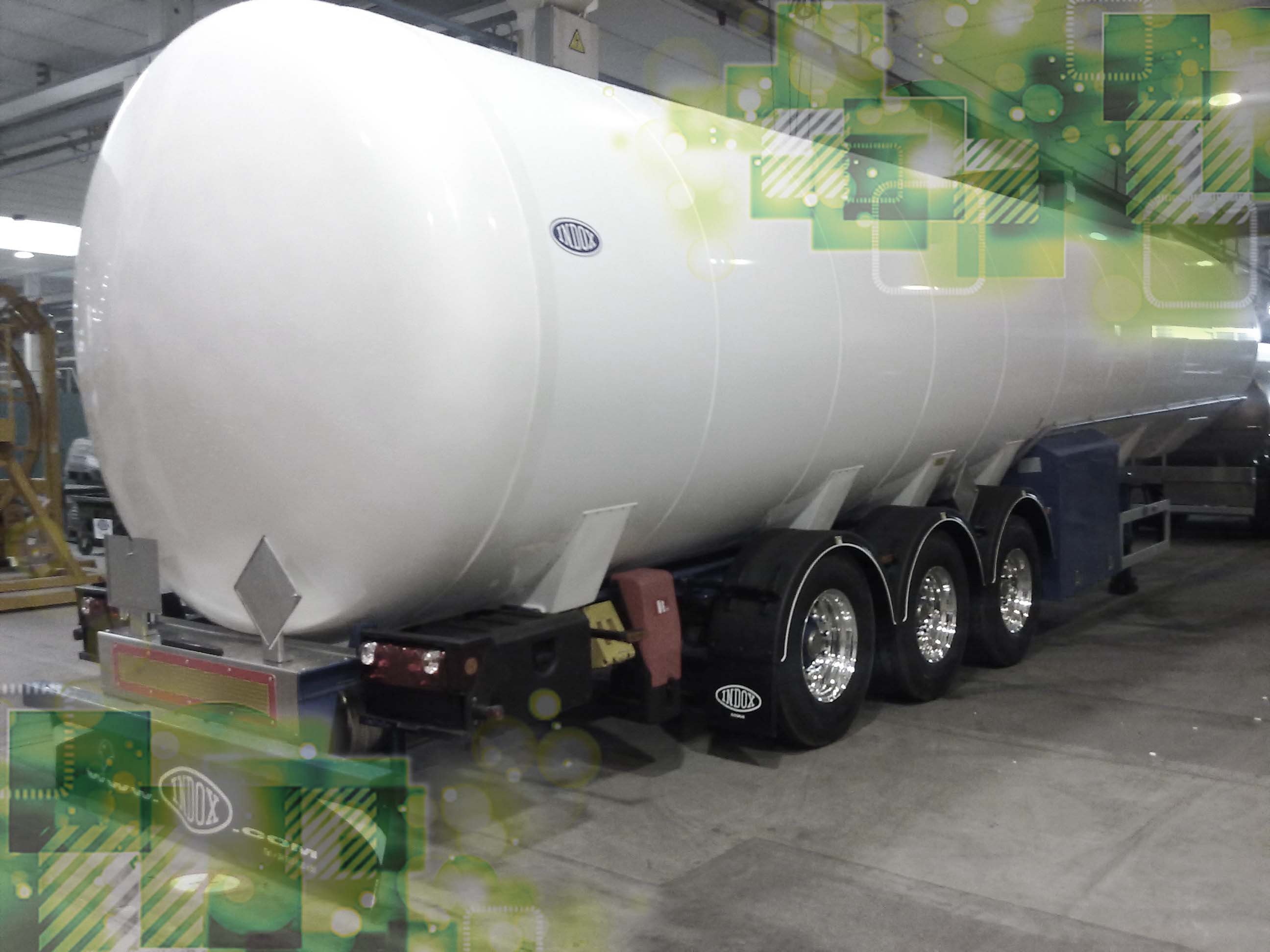Logistics
The LNG is stored in tanks and transported by road tankers at a temperature of around -161°C and at a pressure between 1 and 3 bars.
LNG is transported in cryogenics tanks with trucks that also use that LNG as fuel
LNG can also be transported in ISO containers using trucks, trains, ships that can also use that LNG as fuel


The benefits are:
You can buy LNG on different suppliers
Normally LNG has more quality than pipeline gas.
Access to locations without pipeline connection and/or electrical sources
Use of a less polluting fuel


End Users:
-
01
Liquid phase: Heavy duty fuel for trucks, buses, ships, mining industry…
-
02
Gas phase: Domestic or Industrial consumers.
Other Product & Services
Virtual pipeline
When there is no Natural Gas Pipeline, you can deliver LNG (Liquid Natural Gas) from the source to the final user by a Virtual Pipeline.
Learn More
Liquefaction plant
The liquefaction Plant is the key point in the virtual pipeline because it’s an easier and cheaper way of transporting Natural Gas over long distances.
Learn More
Truck loading facility
An LNG truck loading facility is the equipment to deliver to an LNG tanker the Liquid Natural Gas you have in a LNG Terminal Reception Plant.
Learn More
Bunkering
The shipping industry needs to reduce emissions from its use of fuels. Riverships, harbour tugs, tourist & passenger ships, ferries and Industrial ship transportation are moving fast to much cleaner fuels and LNG is the only full reasonable fuel they can use.
Learn More
Regasification plant
Once received and offloaded, the LNG is returned to cryogenic storage tanks, where it is kept at a temperature around -161°C prior to regasification.
Learn More
Natural gas fueling station
Today's vehicles are filled with different kinds of liquefied gas: methane (natural gas), propane, butane and their mixtures (so-called hydrocarbon gases)
Learn More


